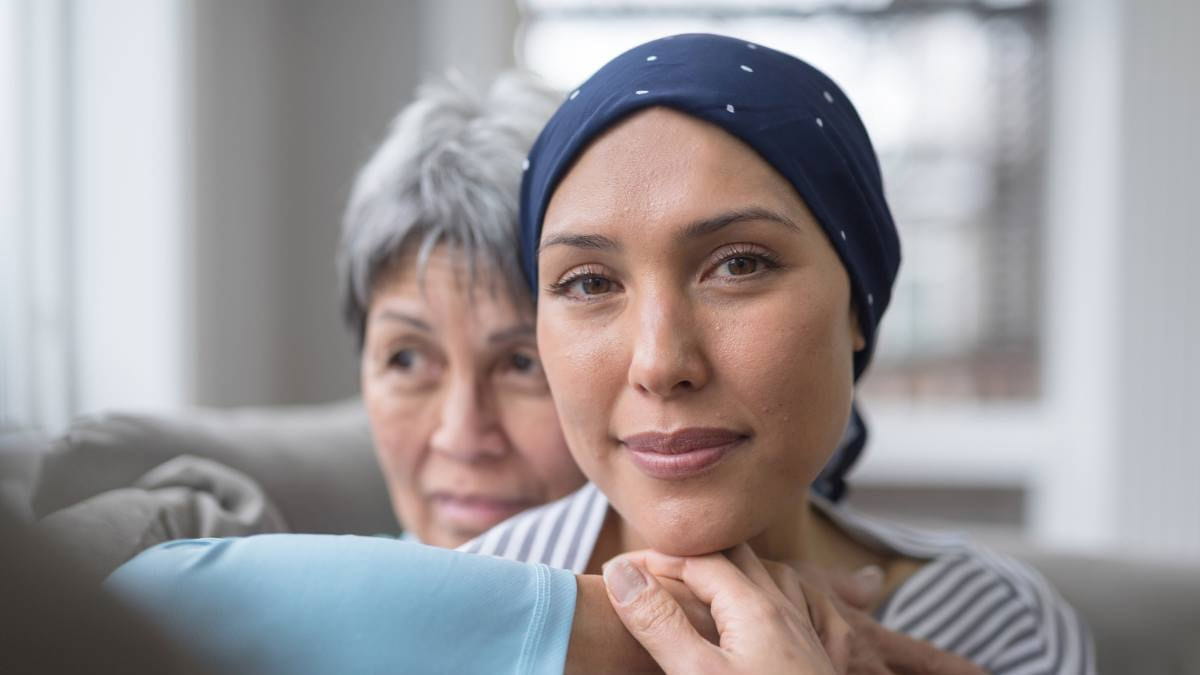Blog article
Ovarian cancer research and supportive resources

Here's something only 31% of Australians know: Ovarian cancer has the poorest survival rate of any female cancer in Australia.1 Sharing in conversations that lead to more awareness and openness around this cancer, and encouraging those you care about to educate themselves on symptoms is key in creating change.
How common is ovarian cancer in Australia?
Ovarian cancer is a disease where some of the cells in one or both ovaries start to grow abnormally and develop into cancer.
Statistics show that:
- By the age of 75, 1 in 161 women will have developed ovarian cancer2
- The average age at diagnosis is 663
- Approximately 1800 Australian women are diagnosed with ovarian cancer annually
- Deaths from ovarian cancer in Australia are higher than any other gynaecological cancer2
What are the symptoms we know of?
It’s important to know that a pap smear does not detect ovarian cancer (pap smears detect a virus that can cause cervical cancer, not ovarian). There are no effective tests or screening currently available for ovarian cancer and it can be difficult to diagnose. Symptoms can be unclear and often mimic those of other common illnesses.4
However, it’s important to be aware of the symptoms of ovarian cancer, especially if they persist for two weeks or more.5
Symptoms can include:2
- Increased need to urinate
- Feeling full quickly even after small meal
- Pain or discomfort in the abdomen and pelvis
- Increased abdomen bloating or size
- Unexplained changes in weight
- Increased fatigue
- Loss of appetite
- Pain during intercourse
- Changes in bowel movements – constipation or diarrhoea
- Increased flatulence
- Bleeding in between periods or post menopause
If symptoms persist, go to your doctor. If you’re unsure about your doctor’s diagnosis, seek a second opinion.
Steps following symptoms
Keeping a symptoms diary can help you decide when to see a GP.
If you are experiencing symptoms associated with ovarian cancer and/or your GP would like you to see a specialist, you will need to be referred to a gynaecological oncologist.
This is a specialist in treating women with cancers of the female reproductive system. They are carefully trained to carry out important surgical procedures associated with ovarian cancer treatment, as well as support other treatments such as chemotherapy and hormone therapy in conjunction with medical oncologists.
A note from Ovarian Cancer Australia: It is important to be aware of the strict guidelines for women and GP’s about treating women with suspected ovarian cancer. These are called the Optimal Care Pathway for women with ovarian cancer.
Current research
Ovarian Cancer Australia is constantly working with the Government to prioritise research.
In 2020, the Government dedicated $16million worth of funding to eight ovarian research projects. These projects form part of the Ovarian Cancer National Action Plan (NAP) 2020 – 2025. 5
The NAP aims to achieve three things:6
- Reduce the incidence of ovarian cancer
- Increase the survival rate
- Support and improve life for those living with ovarian cancer
The NAP is prioritising:
- Patient-and family-centred care
- Diagnosis and treatment
- Early detection
- Biology/aetiology
- Prevention
Top health checks for women and people with a cervix
While screenings for ovarian cancer aren’t available yet, there are other health checks to stay on top of. Women and people with a cervix aged 25 to 74 years of age are invited to have a Cervical Screening Test every 5 years through their healthcare provider.
If you’re experiencing persistent symptoms, there are tests and scans that can help rule out cysts or tumours and identify any changes.
These include:7
- Physical examination
- Blood tests
- Pelvic ultrasound
- CT scan
It's important to seek education, stand together, and discover ways you can be a part of spreading knowledge and supporting development in treatment by visiting Ovarian Cancer Australia.
Knowledge is power – support and resources
A great list of where to start for stories, advice, and ongoing support.
- Ovarian Cancer Australia have put together a detailed library of FAQs to help you navigate ovarian cancer.
- There’s also this Resilience Kit available for those living with ovarian cancer – a valuable 230 page guide that details and supports all stages.
- There’s also a private Facebook support group.
- You can also speak to specially trained staff at Cancer Council 13 11 20. They can answer your questions about the effects of cancer, explain what will happen during treatment and link you to support groups and other community resources.
- If you need an interpreter, call TIS (Translating and Interpreting Service) on 13 14 50.
- For support and advice for carers, call the Carers Association on 1800 242 636.
- For information about ovarian cancer call Ovarian Cancer Australia on 1300 660 334 or visit Ovarian Cancer Australia.



